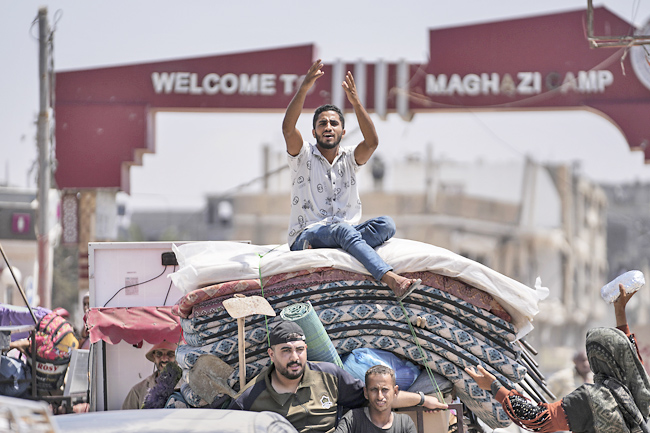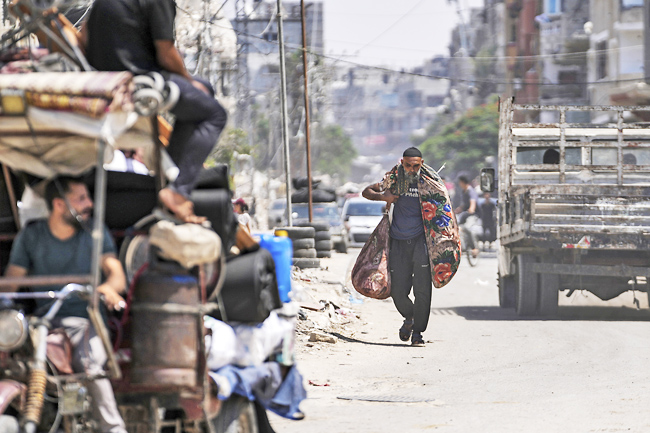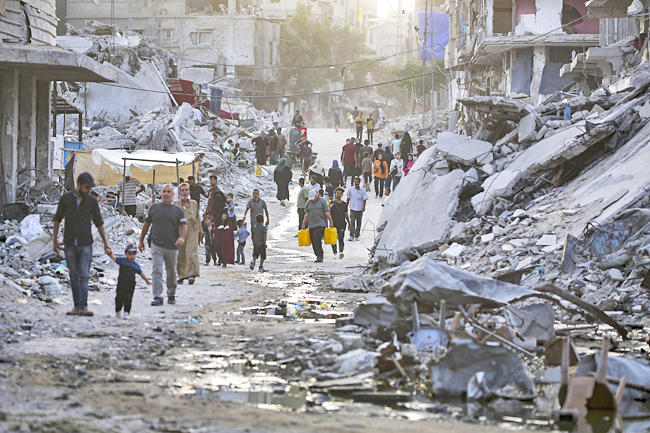AP – United States (US) and Arab mediators said they are closing in on a deal to halt the war in Gaza that erupted since Hamas’ October 7 attack, but the talks have dragged on for months, with several moments of false hope.
The negotiations gained new urgency when Lebanon’s Hezbollah vowed to avenge the targeted killing of two top militants, attributed to Israel, raising fears of a far wider and more devastating war.
US officials expressed cautious optimism after two days of talks in Qatar last week, in which the mediators put forth a bridging proposal. But Hamas said it had serious problems with it, saying it departs from previous iterations that it had largely accepted. Israel also expressed concerns, saying there were compromises it was unwilling to make.
US Secretary of State Antony Blinken is back in the region and set to meet with Israeli Prime Minister Benjamin Netanyahu. Israel sent a delegation to Cairo on Sunday, and the mediators are expected to hold another round of high-level talks with Israel in Egypt later this week.
WHAT’S AT STAKE IN THE CEASEFIRE NEGOTIATIONS?
A ceasefire would halt the deadliest war ever fought between Israelis and Palestinians, a conflict that has destabilised the Middle East and sparked worldwide protests.
Israel’s murderous offensive has killed over 40,000 Palestinians in Gaza, according to local health officials, most of them civilians. The vast majority of the population has been displaced, often multiple times. Hundreds of thousands of people are packed into squalid tent camps, the health sector has largely collapsed and entire neighbourhoods have been obliterated.
The Hamas-led attack on October 7 killed some 1,200 people, and saw the militants abduct around 250 hostages. Some 110 hostages are still in Gaza, with Israeli authorities saying around a third are dead by their own bombings. Over 100 hostages were released during a weeklong ceasefire in November.





Lebanon’s Hezbollah has launched drones and rockets into Israel on a near-daily basis since the start of the war, and Israel has responded with airstrikes and artillery. The violence has escalated, forcing tens of thousands of people to flee their homes on both sides of the border.
Hezbollah has vowed an even more severe attack – without saying when or how – in response to the killing last month of Fouad Shukur, one of its top commanders, in an Israeli airstrike in Beirut.
Other groups in Syria, Iraq and Yemen have attacked Israeli, US and international targets in solidarity with the Palestinians. Iran and Israel traded fire directly in April.
Hezbollah has said it would halt its operations along the border if there is calm in Gaza. A ceasefire deal might also persuade both Hezbollah and Iran to refrain from retaliatory strikes on Israel – if only temporarily – to avoid being seen as spoilers.
WHAT ARE THE MAIN STICKING POINTS?
The two sides have been working off an evolving proposal for a three-phase process in which Hamas would free all the hostages in exchange for the release of Palestinian prisoners, an Israeli withdrawal from Gaza and a lasting ceasefire.
President Joe Biden came out in favour of the proposal in a May 31 speech and the United Nations (UN) Security Council approved it shortly thereafter. But since then, Hamas has proposed “amendments” and Israel has asked for “clarifications”, with each side accusing the other of making new demands it cannot accept.
Hamas wants assurances that Israel will not resume the war after the first batch of hostages – around 30 of the most vulnerable – are released. Israel wants to ensure negotiations do not drag on indefinitely over the second phase, in which the remaining living hostages, including male soldiers, are to be freed. Netanyahu has also demanded in recent weeks that Israel maintain a military presence along the Gaza-Egypt border to prevent arms smuggling and along a line bisecting the territory so it can search Palestinians returning to their homes in the north and make sure militants don’t slip in.
Israel denies the demands are new, but there was no reference to either in Biden’s speech or the UN resolution, which spoke of a full withdrawal. Other lingering issues include which Palestinian prisoners will be released and whether they will be sent into exile.
WHO DECIDES WHETHER THERE IS A CEASEFIRE?
Any deal would have to be accepted by Netanyahu and Yahya Sinwar, who helped mastermind the October 7 attack and became Hamas’ overall leader after Haniyeh was killed.
Netanyahu faces intense pressure from families of the hostages and much of the Israeli public to make a deal to bring them home. But far-right leaders in his coalition have threatened to bring down the government if he concedes too much, forcing early elections that could drive him from power.
Sinwar, meanwhile, is hiding in Gaza, likely deep inside Hamas’ vast network of tunnels, and has stuck to a hard line throughout the talks. He also tops Israel’s most-wanted list, raising questions about what happens if he is killed.
In the past it has taken several days for Hamas’ negotiators to send proposals to Sinwar and receive his feedback. That means that even when the work of hammering out the latest proposal is completed, it would likely take a week or more for Hamas to formally respond to it.
Palestinians in Gaza say they are exhausted and desperate for a ceasefire.
When Hamas accepted an earlier proposal in May, spontaneous celebrations erupted – but those hopes were soon dashed.






